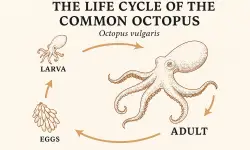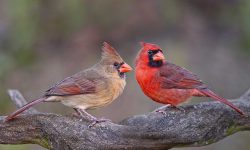From the soaring cliffs of Alaska to the desert skies of Arizona, hawks rule the air across North America. These sharp-eyed raptors are more than just symbols of wilderness—they are finely tuned hunters, each with unique adaptations and dietary preferences. This article explores 20 of the most fascinating hawks in North America and takes a deep dive into what they eat, how they hunt, and where they fit into their ecosystems.
Understanding Hawks: Masters of the Sky
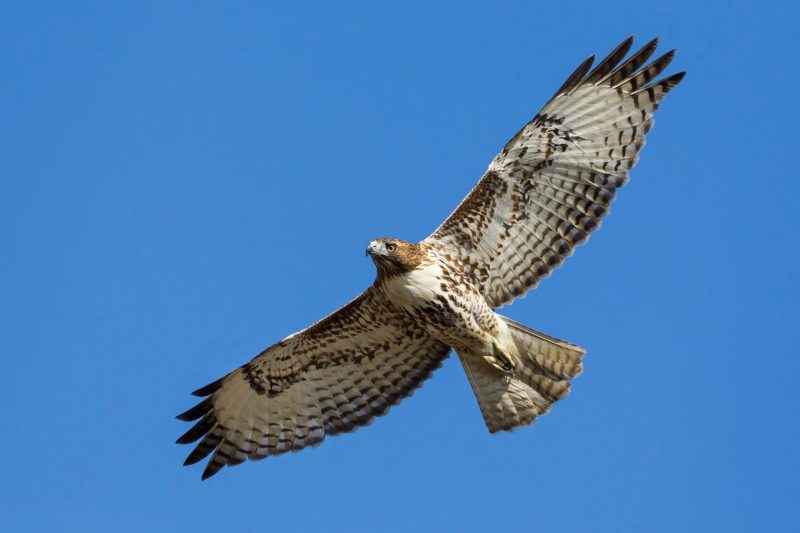
Hawks, part of the Accipitridae family, are expert aerial predators equipped with sharp talons, hooked beaks, and extraordinary eyesight. They thrive across North America in environments ranging from open plains to dense forests, each species adapted to its niche with remarkable precision.
Some, like the Red-tailed Hawk, specialize in small mammals in open habitats. Others, such as Cooper’s Hawks, hunt birds in wooded areas, relying on speed and agility. Certain species even shift their diet seasonally—from rodents to insects—demonstrating impressive dietary flexibility.
These food choices aren’t just about survival—they reflect the hawks’ role as top or mid-level predators, shaping prey populations and signaling ecosystem health. Changes in their diet can reveal shifts in habitat quality, prey abundance, or broader environmental stressors. In this way, hawks are both hunters and sentinels of change in the natural world.
Red-tailed Hawk (Buteo jamaicensis)
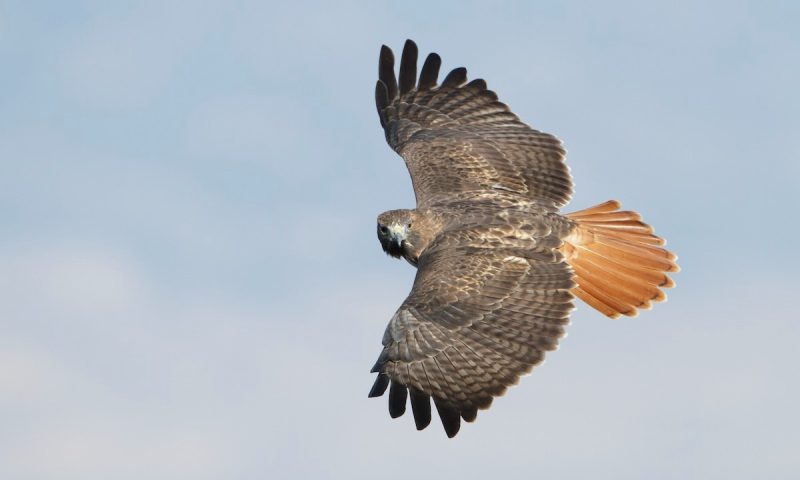
The Red-tailed Hawk is among the most adaptable and widespread raptors in North America, thriving in open countryside, forest edges, deserts, and even cityscapes. Its signature hunting style—soaring in wide circles while scanning below—makes use of its keen eyesight, which can detect prey from over 100 feet in the air.
This species has a highly flexible diet, centered on small to medium mammals like voles, rabbits, and ground squirrels. In urban areas, it readily shifts to prey on rats, pigeons, and even roadkill, revealing an impressive capacity to exploit human-altered landscapes. Reptiles, amphibians, and carrion supplement its diet during seasonal scarcity.
Such adaptability not only ensures the Red-tailed Hawk’s survival across varied habitats, but also positions it as a key predator in maintaining rodent populations and ecological balance.
Cooper’s Hawk (Accipiter cooperii)

Cooper’s Hawks are territorial and monogamous, often returning to the same nesting site year after year. Nesting usually begins in early spring, with the pair selecting a dense conifer or deciduous tree in wooded areas—or increasingly, in suburban greenbelts and urban parks.
The female builds a large stick nest, usually high in the canopy and well-concealed by foliage. While the male performs dramatic aerial displays to court his mate, he also supplies most of the food during incubation.
What sets this species apart is its aggressive nest defense. Both parents, especially the female, are known to fiercely attack intruders—humans included—who venture too close. This protective behavior increases chick survival but also makes Cooper’s Hawk nests among the most dangerous to monitor for researchers and birders alike.
Fledglings begin short flights about 27–34 days after hatching, but remain dependent on their parents for food and flight training for several weeks. This extended care period contributes to the species’ relatively high juvenile survival, despite its high-risk, high-reward nesting strategy.
Sharp-shinned Hawk (Accipiter striatus)
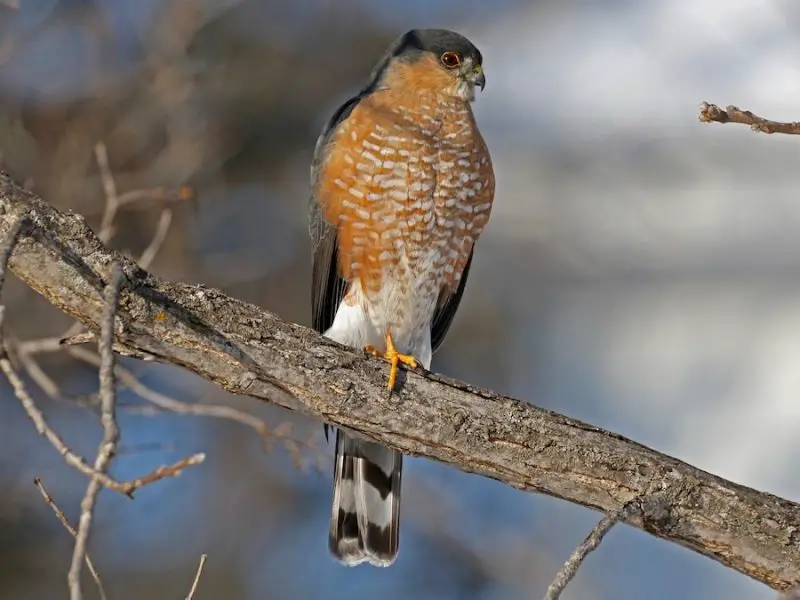
The Sharp-shinned Hawk is the smallest accipiter in North America, but its size belies a fierce and nimble predator. Built for maneuverability, it thrives in dense forests and wooded edges, where it uses rapid, low-level flight to ambush unsuspecting songbirds.
Its diet overlaps with that of the larger Cooper’s Hawk, but it focuses on smaller avian prey such as sparrows, finches, and warblers. These hawks often strike from hidden perches, darting through thick cover with sudden bursts of speed—a hunting strategy refined for precision over brute force.
Breeding Behavior: Secretive Nesters in the Canopy
Sharp-shinned Hawks are notably secretive during breeding, choosing dense coniferous stands or mixed woodlands for their nests. The female constructs a compact platform of sticks, usually well-hidden in the upper branches of mature trees. Their shy nature and remote nesting preferences make them difficult to study compared to their more urban-tolerant cousin, the Cooper’s Hawk.
Incubation lasts about a month, with the female brooding while the male provides food. Unlike many raptors, Sharp-shinned Hawks tend to move away from human presence during the breeding season, avoiding disturbance altogether. Fledglings remain near the nest for several weeks, practicing flight among thick branches before dispersing.
This combination of elusiveness, forest dependency, and selective prey makes the Sharp-shinned Hawk a key indicator species for the health of mature woodland ecosystems.
Northern Harrier (Circus hudsonius)
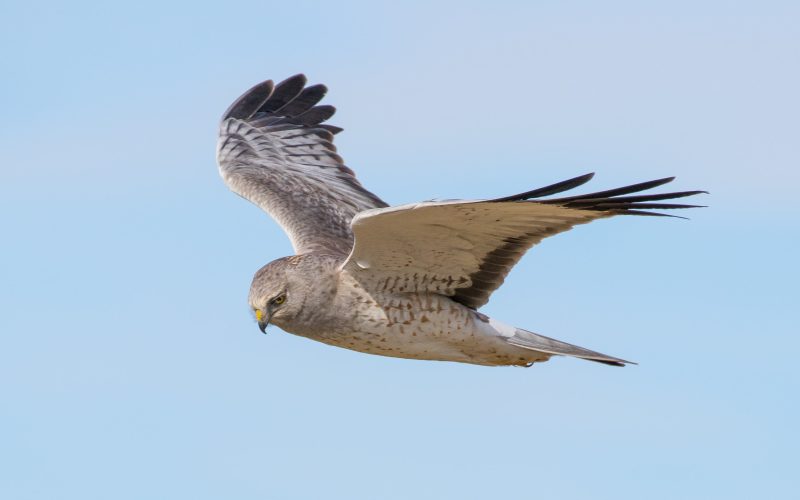
The Northern Harrier is one of North America’s most distinctive raptors, instantly recognizable by its low, buoyant flight over open landscapes and its owl-like facial disc—a rare trait among diurnal birds of prey. This unique adaptation enhances sound reception, allowing the harrier to hunt using both keen eyesight and directional hearing, a combination more typical of nocturnal owls.
It thrives in marshes, prairies, and grasslands, where it scans for small mammals like voles, mice, and shrews. It also opportunistically captures amphibians and small birds concealed in tall vegetation. By flying just above the surface, often tilting and gliding with wings held in a shallow “V,” it can flush and detect hidden prey few other hawks can access.
Breeding Behavior: Ground Nesters of Open Country
Unlike most raptors, Northern Harriers are ground nesters. The female builds a loose platform of grass and reeds in tall vegetation, often in wetlands or undisturbed fields. This makes their nests particularly vulnerable to predators and habitat disturbance, including mowing and drainage.
Males may mate with multiple females in a single breeding season—a rare case of raptor polygyny. Each female raises her own brood, with the male providing food to all mates and chicks. Chicks fledge about 30–35 days after hatching, but remain near the nest for several more weeks, gradually mastering low hunting flights over open ground.
The harrier’s dependence on intact grassland and wetland ecosystems, along with its atypical reproductive strategy, underscores its role as a sentinel species for open habitat conservation.
Swainson’s Hawk (Buteo swainsoni)

Swainson’s Hawk is a remarkable long-distance migrant, traveling over 10,000 kilometers between breeding grounds in western North America and wintering areas in the grasslands of Argentina. This journey represents one of the longest migrations of any raptor species in the Western Hemisphere.
On the breeding range, it favors open prairies, rangelands, and agricultural fields, where it hunts ground squirrels, gophers, and other small mammals. But what sets this hawk apart is its insect-based diet during migration and winter. In South America, it forms massive flocks—sometimes thousands strong—feeding primarily on grasshoppers, crickets, beetles, and other orthopterans. This level of dietary flexibility is rare for a large hawk and allows the species to exploit seasonal abundance across hemispheres.
Breeding Behavior: Platform Nesters of the Plains
Swainson’s Hawks are monogamous, returning to the same breeding territories year after year. Pairs construct stick nests in isolated trees, utility poles, or shelterbelts, often in otherwise treeless landscapes. The female lays 2 to 3 eggs, and both parents share incubation and chick-rearing duties.
Unlike forest hawks, Swainson’s nests are highly visible and exposed, relying more on vigilance and territory defense than concealment. Their breeding success often correlates with rodent availability, which directly affects the adults’ ability to provision growing chicks.
Because of their reliance on both North and South American ecosystems, Swainson’s Hawks are especially vulnerable to environmental threats along migratory corridors—particularly pesticide use in their South American wintering grounds, where mass insect poisoning can lead to high mortality events.
Ferruginous Hawk (Buteo regalis)

The Ferruginous Hawk is the largest buteo in North America and a specialist of wide-open grasslands, deserts, and sagebrush plains. Named for its rust-colored (ferruginous) plumage on the back and legs, it is built for power and endurance, with long wings and a broad chest ideal for soaring at altitude.
Unlike many hawks that hunt from trees or utility poles, this species often hunts from the ground, crouching near burrows and lunging with surprising speed to ambush prey. Its diet focuses on jackrabbits, prairie dogs, ground squirrels, and other medium-sized mammals. This ground-oriented strategy reflects a rare ecological niche among large raptors: part hunter, part ambush predator in mammal-rich steppe habitats.
Breeding Behavior: Architects of the Plains
Ferruginous Hawks construct large stick nests, often placed on low cliffs, rock outcrops, lone trees, or even artificial platforms and hay bales. The nests are impressively bulky—sometimes over a meter across—and lined with soft material like cow dung, bark, or wool. These additions may provide insulation or help deter parasites.
The female lays 2 to 5 eggs, and both parents share incubation and care. This species is highly territorial during breeding season and can become aggressive near the nest. Unlike tree-nesting hawks, their open-country nests are vulnerable to disturbance, especially from ranching, oil development, or recreational vehicles.
Ferruginous Hawks are considered sensitive to habitat loss, especially due to prairie conversion and loss of ground squirrel colonies, which serve as both food and environmental cues. Conservation efforts often focus on protecting rangeland and discouraging prairie dog eradication, which disrupts the entire predator-prey dynamic of this ecosystem.
Rough-legged Hawk (Buteo lagopus)
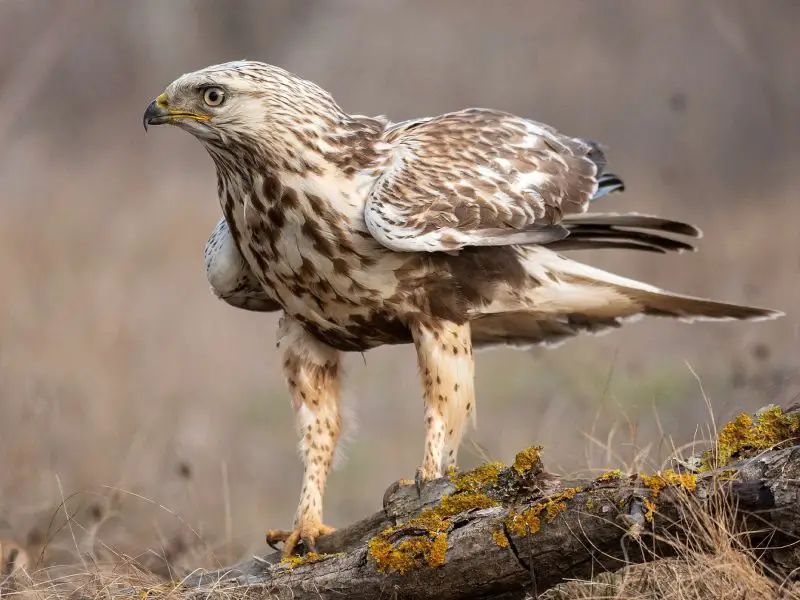
The Rough-legged Hawk is a true Arctic raptor, adapted to extreme conditions both physiologically and behaviorally. It breeds in the tundra of the high Arctic and migrates south each winter, becoming a familiar sight across the northern U.S. in open farmlands, wetlands, and grasslands during the colder months.
One of its most distinguishing traits is its ability to hover in place, a behavior known as “kiting.” This is highly unusual among buteos, most of which rely on soaring or perch hunting. By facing into the wind and adjusting wing position and tail spread, Rough-legged Hawks maintain a fixed position midair while scanning for prey below. This technique is especially useful when snow blankets the landscape, requiring aerial precision to detect movement beneath.
Its diet is dominated by small mammals, particularly voles and lemmings. During Arctic summers, its reproductive success is tightly linked to lemming population cycles; in high-lemming years, clutch sizes and fledgling survival increase dramatically.
Breeding Behavior: Cliff Nesters of the Tundra
Unlike many hawks that nest in trees, Rough-legged Hawks use cliff ledges, rocky outcrops, or even low hummocks in treeless tundra landscapes. Their nests are made of sticks and grasses, lined with softer material like moss or feathers. The female lays 2 to 7 eggs, depending heavily on prey abundance.
Because of the short Arctic summer, these hawks exhibit rapid chick development, with young fledging in just over a month. Both parents contribute to feeding and defense, though the male does most of the hunting early in the nesting cycle.
Rough-legged Hawks are long-distance migrants, sometimes traveling over 5,000 kilometers between nesting and wintering grounds. They show strong site fidelity to winter territories and can return to the same open fields year after year.
Red-shouldered Hawk (Buteo lineatus)
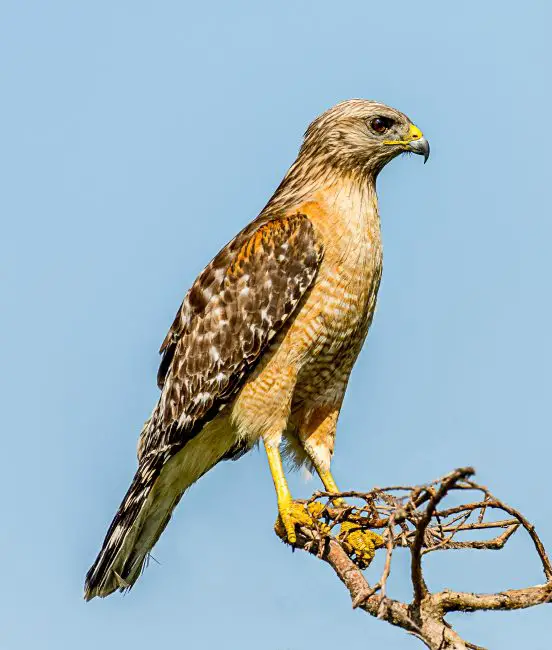
The Red-shouldered Hawk is a medium-sized raptor best known for its piercing, whistled call—often transcribed as “kee-ah, kee-ah”—which echoes through deciduous woodlands, especially near streams and swamps in the eastern and southeastern United States. Its loud vocalizations, often delivered from high perches, make it one of the most easily heard but less frequently seen hawks in its range.
Unlike soaring raptors that patrol open skies, this species is a perch-and-pounce hunter. It prefers to perch quietly in shaded forest canopies, particularly over wetlands or woodland edges, scanning the forest floor or shallow water for movement. Its diet includes a diverse mix of amphibians, reptiles, and mammals—from frogs and snakes to chipmunks and small rodents. The hawk’s reliance on riparian corridors makes it especially sensitive to wetland degradation.
Breeding and Nesting Behavior: Loyal to the Forest
Red-shouldered Hawks are territorial and monogamous, often returning to the same nesting territory year after year. Pairs form strong bonds and may reuse or rebuild previous nests—typically large stick platforms placed high in mature trees, often near water.
The female lays 2 to 5 eggs, and both parents contribute to raising the young, although the female does most of the brooding. The male supplies food during incubation and early chick-rearing. Nestlings fledge after about 5 to 6 weeks, but remain dependent on parents for several more weeks as they refine their hunting skills.
One remarkable trait of this species is its aggressive nest defense. Red-shouldered Hawks will dive-bomb humans, crows, or even larger hawks that venture too close, making them one of the more assertive woodland raptors.
Broad-winged Hawk (Buteo platypterus)

The Broad-winged Hawk is a compact forest raptor with short, broad wings and a distinctive banded tail, well adapted for maneuvering through dense eastern deciduous forests. Though inconspicuous during the breeding season, it becomes dramatically visible during migration, when thousands form “kettles”—massive spiraling flocks that ride thermals across the sky in one of North America’s most impressive raptor migrations.
While breeding, Broad-winged Hawks are mostly silent and secretive, often going unnoticed even in well-populated woodland areas.
Diet and Foraging Strategy: Opportunistic and Varied
On the breeding grounds, Broad-winged Hawks are generalist predators, feeding on a wide array of small animals. Their diet includes frogs, toads, snakes, voles, mice, and large insects like grasshoppers or cicadas. They typically hunt from low to mid-level perches, using a still-hunting strategy—waiting silently until prey is detected, then swooping down in a quick burst of flight.
During migration, their behavior shifts. As they pass over open landscapes, they often feed opportunistically, especially on flying insects such as dragonflies. This dietary flexibility helps them sustain energy through their long journey.
Breeding Behavior: Deep in the Forest
Broad-winged Hawks build their nests in the interior of mature forests, often far from human disturbance. Nests are constructed in the main crotch of deciduous trees, typically 20–40 feet above the ground. Made from sticks and lined with fresh green leaves, these nests blend well with the foliage.
The female lays 2 to 3 eggs, and incubation lasts about 28–31 days. The male assists by bringing food while the female broods. Nestlings fledge at around 5 to 6 weeks old and remain dependent for a short period as they learn to forage independently.
Unlike more territorial hawks, Broad-wingeds are relatively quiet and elusive, relying more on seclusion than aggression to protect their nesting sites.
Migratory Marvel: Long-distance Coordination
One of the most awe-inspiring features of the Broad-winged Hawk is its migration. In late summer and early fall, they embark on a journey of up to 4,500 miles, flying from Canada and the eastern U.S. to wintering grounds in Central and South America, particularly the Amazon Basin.
They rely heavily on rising thermals and mountain ridges, conserving energy by gliding rather than flapping. The use of consistent migratory corridors, along with the tendency to travel in massive flocks, makes them a favorite among raptor watchers.
Zone-tailed Hawk (Buteo albonotatus)
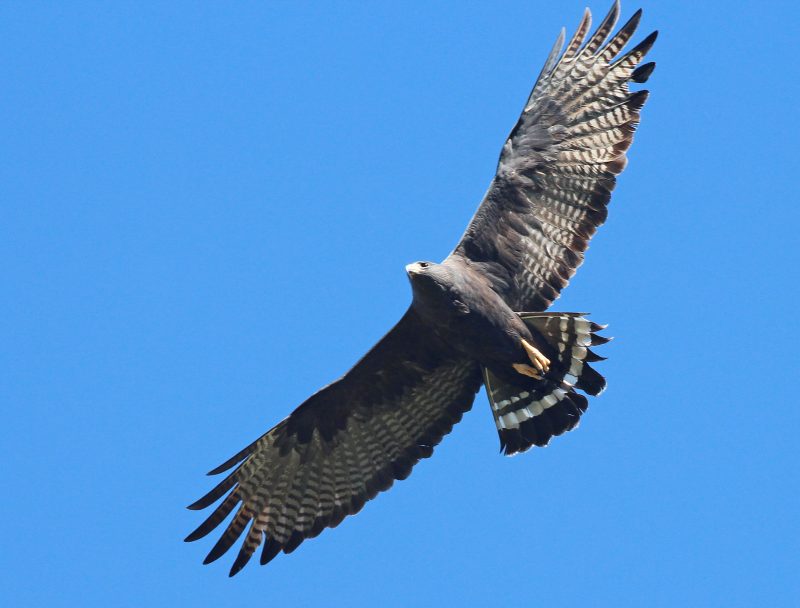
The Zone-tailed Hawk is a clever mimic, often mistaken for a Turkey Vulture due to its dark plumage, white-banded tail, and teetering, dihedral flight. This resemblance helps it approach prey unnoticed, using surprise as a key hunting tactic.
It patrols arid canyons and desert washes of the southwestern U.S., feeding on reptiles, small birds, and mammals. Unlike most hawks, it often soars quietly among vultures, then breaks formation to dive on prey.
Nesting occurs in spring, typically high in trees or cliffs near water. The female lays 1 to 3 eggs and incubates while the male brings food. Young fledge after about six weeks.
Although not globally threatened, the species has a limited and patchy range in the U.S., and is sensitive to habitat loss along riparian corridors and nesting cliffs. Its vulture-like mimicry remains one of the most fascinating adaptations among North American raptors.
Gray Hawk (Buteo plagiatus)
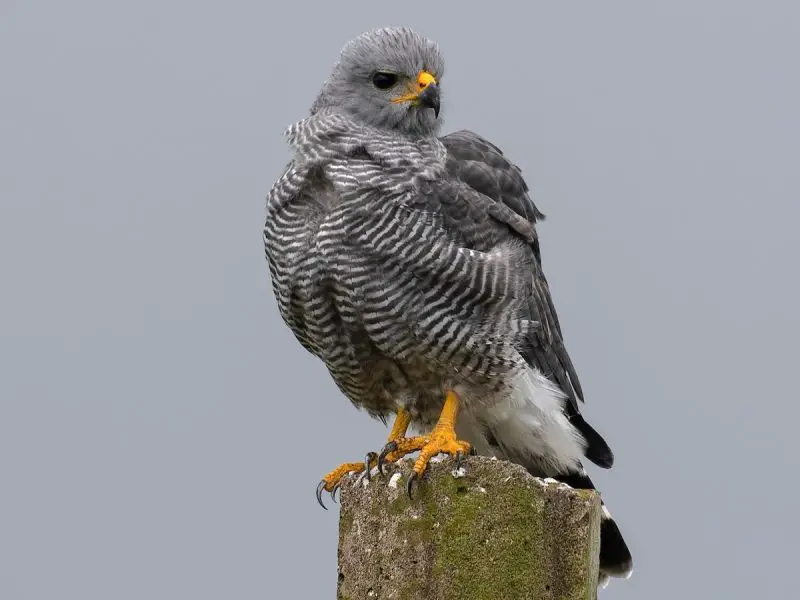
The Gray Hawk is a sleek, pale raptor found mostly in riparian woodlands of southern Arizona and Texas. With broad wings and a banded tail, it soars low along rivers and streams in search of prey.
Its diet centers on lizards, especially those sunning on branches or rocks, though it also takes small birds and mammals. Nesting occurs in tall cottonwoods or mesquites, where the pair raises one or two chicks each season.
Though rare in the U.S., the Gray Hawk is more common farther south. Its presence signals healthy riparian corridors, making it an important species for ecosystem monitoring.
Harris’s Hawk (Parabuteo unicinctus)

Harris’s Hawks are among the most intelligent and social raptors in North America. Found in arid regions of the southwestern U.S., particularly Arizona and New Mexico, they thrive in deserts, scrublands, and mesquite thickets where prey is sparse and visibility is high.
What sets them apart is their unusual cooperative hunting strategy. Unlike most raptors that hunt alone, Harris’s Hawks form family groups of 2 to 6 individuals, often composed of a dominant breeding pair and their offspring. These groups coordinate like a wolf pack—flushing, chasing, and ambushing prey such as rabbits, doves, and ground squirrels. One bird may flush the prey while others lie in wait, or they may take turns diving until the target tires.
This social system extends to nesting as well. Helpers—usually older offspring—assist in feeding the young and defending the nest. They nest in elevated spots like mesquite trees, utility poles, or saguaros, constructing bulky stick nests used year after year.
Their cooperative lifestyle allows Harris’s Hawks to succeed in open desert environments where teamwork offers a distinct evolutionary advantage.
Common Black Hawk (Buteogallus anthracinus)

The Common Black Hawk is a riparian specialist, found primarily in the American Southwest, especially in southeastern Arizona and southwestern New Mexico. It inhabits narrow corridors of streamside vegetation, where cottonwoods, willows, and sycamores line permanent or seasonal water sources.
Unlike most hawks, this species is tied closely to aquatic prey. Its diet centers on crayfish, but also includes frogs, small fish, and aquatic insects. It often hunts by perching quietly above shallow streams, waiting to pounce on movement below—a behavior more reminiscent of a heron than a hawk.
Nesting occurs in tall riparian trees, where pairs reuse and rebuild large stick nests each year. The species is highly territorial during breeding, and courtship includes aerial displays and food offerings.
Because of its dependence on healthy stream ecosystems, the Common Black Hawk is particularly vulnerable to habitat degradation, including water diversion, drought, and the loss of native vegetation. Even small changes in water flow can impact its food supply and nesting success, making it a powerful indicator of riparian ecosystem health.
Northern Goshawk (Accipiter atricapillus)

The Northern Goshawk is the largest North American accipiter, a fierce and secretive raptor that rules mature forests across the northern U.S. and Canada. With its piercing red eyes, bold white eyebrow stripe, and powerful frame, it is built for explosive ambush hunting in tight, wooded terrain.
This hawk’s diet reflects its strength and agility. It preys on grouse, jays, woodpeckers, squirrels, and snowshoe hares, capturing them with sudden, high-speed attacks launched from dense cover. Using its long tail and broad wings, the goshawk maneuvers through trees with deadly precision.
During breeding season, it constructs a large stick nest high in a conifer or aspen, usually well-hidden deep in the forest. Both parents fiercely defend the nest—attacks on intruders, including humans, are well documented. This aggressive protection ensures the safety of their brood in remote habitats.
Because of its sensitivity to disturbance and dependence on large, unbroken forests, the Northern Goshawk is considered an indicator species for healthy woodland ecosystems. Logging and habitat fragmentation pose ongoing threats to its long-term stability across parts of its range.
White-tailed Hawk (Geranoaetus albicaudatus)

The White-tailed Hawk is a striking raptor of the southernmost U.S., found primarily in the grasslands and coastal plains of southern Texas, with its broader range extending into Central and South America. Its namesake white tail, capped with a bold black band, contrasts beautifully against its slate-gray wings, rufous shoulders, and pale underparts.
Adapted to open habitats, it hunts from elevated perches such as fence posts, yuccas, or dead trees, scanning the land for movement. Its diet is broad and opportunistic, including rodents, small birds, reptiles, and large insects. It also patrols low over fields and scrublands, swooping down with precision.
One of the more resourceful hunting behaviors of this species involves following brush fires. As flames move through the landscape, they flush out prey—particularly small mammals and reptiles—and the hawk exploits the chaos to snatch them on the run. This strategy reflects a high level of adaptability.
While not abundant in the U.S., it remains a charismatic symbol of the wild grasslands and an important predator in controlling rodent populations in its native ecosystems.
Crane Hawk (Geranospiza caerulescens)
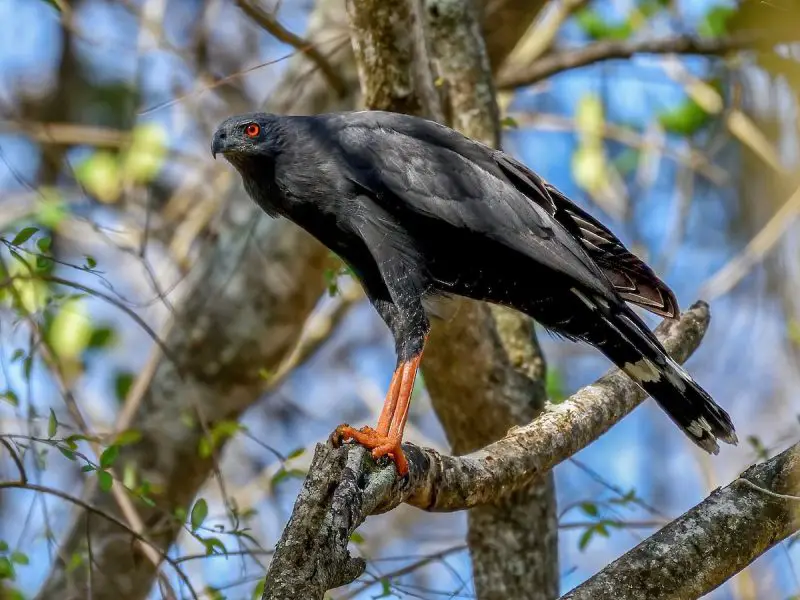
The Crane Hawk is a rare and elusive raptor in the United States, with only occasional records in southern Texas, though it is more common in tropical forests of Central and South America. It stands out for its long, slender legs, charcoal-gray plumage, and piercing red eyes.
This hawk’s most remarkable adaptation lies in its double-jointed legs, a rare trait among birds of prey. These flexible limbs allow it to reach deep into tree cavities, crevices, and bromeliads to extract hidden prey—earning it a reputation as a specialized cavity forager.
Its diet includes bird nestlings, lizards, tree frogs, and large insects. Rather than relying on speed or ambush tactics like other hawks, the Crane Hawk slowly stalks through foliage, using precision and dexterity to access food few other raptors can reach.
Although seldom seen in North America, the species is a powerful reminder of the evolutionary diversity and innovation within the raptor world.
Roadside Hawk (Rupornis magnirostris)
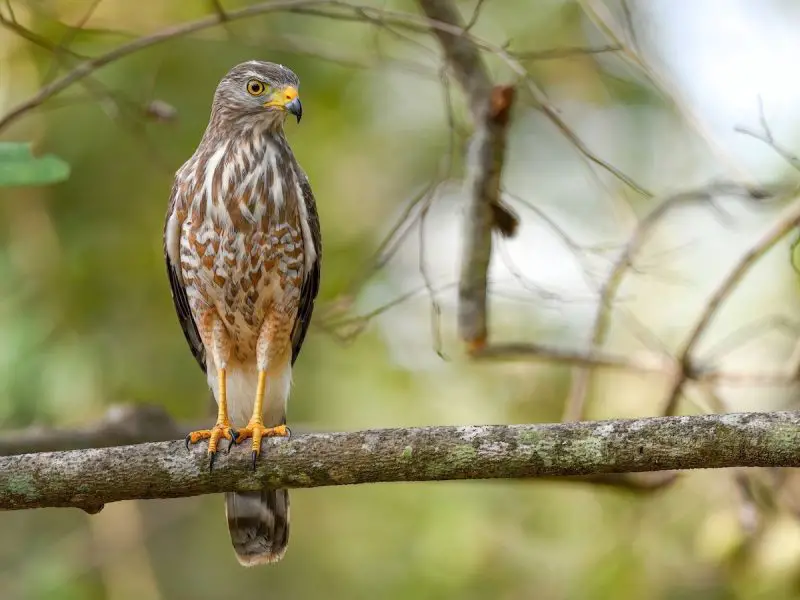
A small, broad-winged raptor, the Roadside Hawk is only rarely observed in southern Texas, though it is widespread across Central and South America, thriving in forests, savannas, and even urban areas.
It lives up to its name—frequently seen perched on roadside poles or fence posts, surveying the ground for movement. Its typical prey includes large insects, lizards, snakes, and small mammals. Opportunistic and adaptable, it also raids bird nests and takes advantage of roadkill.
Despite its modest size, it can be surprisingly aggressive, even chasing away larger raptors from its territory. Its piercing whistle-like call is a familiar sound in Latin American countryside, often betraying its presence long before it’s seen.
The Roadside Hawk exemplifies ecological flexibility, able to exploit a wide range of human-altered landscapes without losing its predatory edge.
Short-tailed Hawk (Buteo brachyurus)
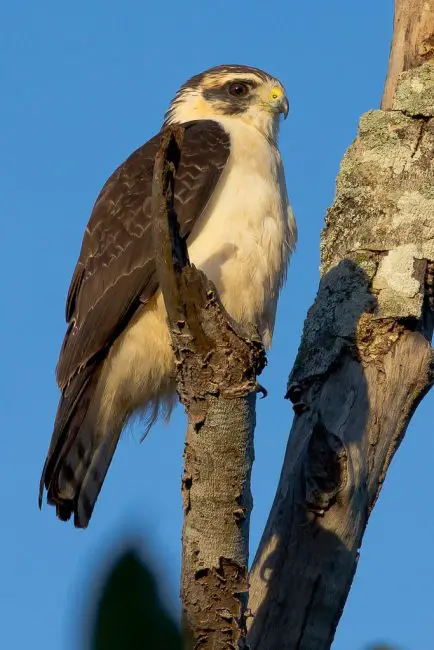
Primarily found in Florida’s subtropical woodlands and wetlands, the Short-tailed Hawk is a stealthy aerial predator known for its high-soaring hunting style.
It specializes in catching small birds on the wing, such as warblers and swallows, often diving suddenly from great heights to surprise its prey. It also takes large flying insects when bird prey is scarce.
This species comes in two color morphs—dark and light—with the light morph being more common in the U.S. Its graceful flight and quiet hunting tactics make it easy to miss, but it plays an important role in maintaining balance in the canopy-dwelling bird population.
Though rarely seen, its presence is a sign of healthy forest-edge ecosystems.
Swallow-tailed Kite (Elanoides forficatus)
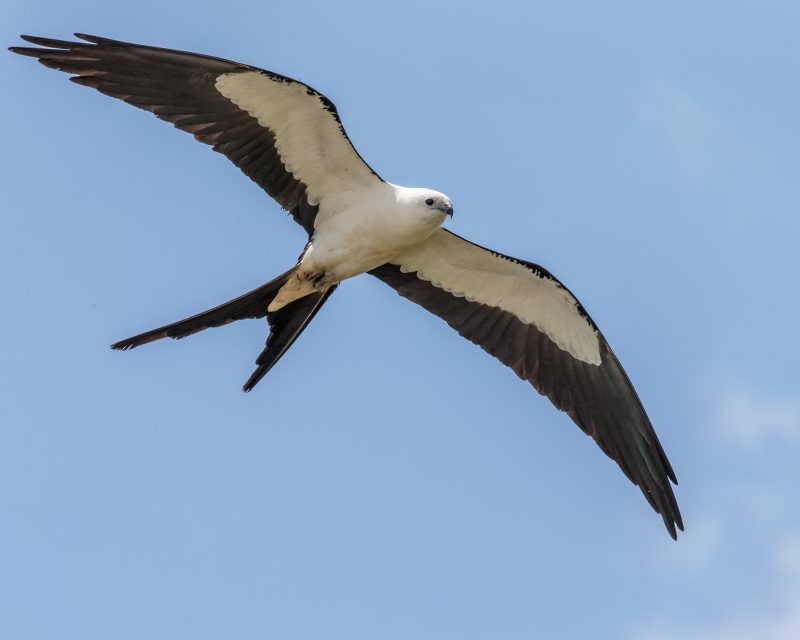
Graceful and unmistakable, the Swallow-tailed Kite is a striking black-and-white raptor with a deeply forked tail that acts like a rudder, allowing it to glide effortlessly over wetlands in the southeastern U.S.
Though not a true hawk, its soaring flight and predatory behavior earn it a place among North America’s aerial hunters. It catches large flying insects, tree frogs, and small reptiles on the wing, often eating them midair.
Swallow-tailed Kites are highly social during migration, sometimes forming roosts of hundreds before heading to South America. Their presence signals healthy riparian and swamp ecosystems, making them a favorite of birdwatchers and conservationists alike.
Conclusion: Hawks and the Balance of Nature
The hawks of North America are diverse in form, habitat, and hunting style, but they all serve as keystone predators in their ecosystems. Their dietary habits keep rodent populations in check, control insect outbreaks, and even influence the distribution of smaller birds and reptiles. Whether soaring above deserts or darting through forests, hawks are a vital part of the continent’s natural balance.
Each species tells a different story about adaptation and survival. Understanding what’s on their menu offers not just insight into their lives, but also a deeper appreciation for the complexity of the food webs they help sustain.

